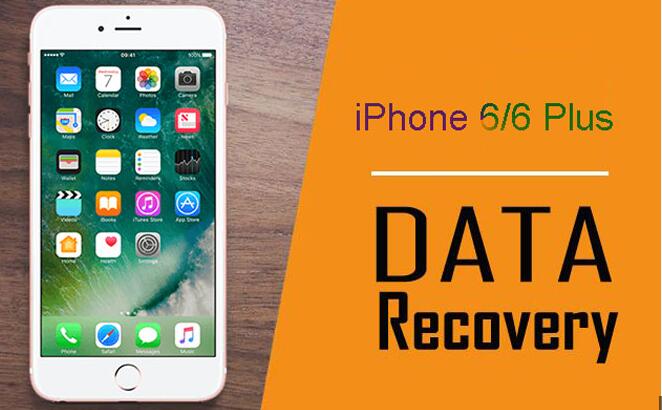Data recovery from an iPhone 6 can be a crucial process if you’ve accidentally deleted important files or if your device is damaged.
iPhone Data Recovery
Data recovery from an iPhone involves retrieving lost or deleted files such as contacts, messages, photos, videos, and app data. The iPhone 6. running iOS 8 through iOS 12. has various methods for data recovery depending on the type of data loss and the condition of your device.
Common Scenarios for Data Loss
Accidental Deletion: Files or data might be deleted by mistake.
Device Damage: Physical damage to the iPhone can lead to data loss.
iOS Update Issues: Problems during an iOS update can result in data loss.
Restoring from Backup: Sometimes, restoring from a backup might lead to loss of newer data.
Jailbreak Issues: Jailbreaking the device might lead to stability issues and data loss.

Preliminary Steps
Stop Using the Device: If your iPhone is still operational, avoid using it to prevent overwriting data that may be recoverable.
Assess the Damage: Determine whether the device is physically damaged or if the issue is software-related.
Methods for Data Recovery
1. Using iCloud Backup
If you have an iCloud backup enabled, you might be able to recover your data from there.
Check iCloud Backup Status:
Go to Settings > [Your Name] > iCloud > Manage Storage > Backups.
Select your device to view the backup date and contents.
Restore from iCloud Backup:
Erase iPhone: Go to Settings > General > Reset > Erase All Content and Settings.
Set Up iPhone: After erasing, your iPhone will restart. Follow the on-screen instructions until you reach the Apps & Data screen.
Restore from iCloud Backup: Select Restore from iCloud Backup and sign in with your Apple ID. Choose the most recent backup to restore.
2. Using iTunes Backup
If you have backed up your iPhone to iTunes, you can restore from the backup.
Check iTunes Backup:
Connect your iPhone to the computer and open iTunes (or Finder on macOS Catalina and later).
Select your iPhone when it appears and go to the Summary tab.
Check the backup status and date.
Restore from iTunes Backup:
Connect iPhone: Connect your iPhone to the computer with the latest backup.
Restore Backup: In iTunes or Finder, select Restore Backup. Choose the most recent backup from the list.
3. Using Third-Party Software
Several third-party data recovery tools can help recover data directly from your iPhone. These tools often offer a free trial version, but full functionality usually requires purchase.
Popular Data Recovery Tools:
Dr.Fone: Offers recovery of photos, videos, contacts, and messages.
iMobie PhoneRescue: Specializes in recovering a wide range of data including messages, contacts, and photos.
Tenorshare UltData: Provides comprehensive data recovery features.
Using a Data Recovery Tool:
Download and Install: Download the software from the official website and install it on your computer.
Connect iPhone: Connect your iPhone to the computer using a USB cable.
Scan Device: Open the data recovery tool and select the type of data you wish to recover. Follow the on-screen instructions to scan your iPhone.
Preview and Recover: Once the scan is complete, preview the recoverable files. Select the files you want to recover and follow the instructions to save them to your computer.
4. Professional Data Recovery Services
If the above methods fail or if your device is severely damaged, you may need to consult a professional data recovery service.
Finding a Professional Service:
Search for reputable data recovery services with experience in iPhone recovery.
Check reviews and customer testimonials to ensure credibility.
Process:
Consultation: Contact the service provider for an initial consultation. Describe the issue and provide details about the device.
Assessment: The service provider will assess the device and provide a quote.
Recovery: If you agree, the service provider will attempt to recover the data. This process may take several days depending on the extent of the damage.
Tips for Successful Data Recovery
Regular Backups: Regularly back up your iPhone to iCloud or iTunes to prevent data loss in the future.
Avoid Overwriting: If you have lost data, stop using the device to prevent overwriting data that might be recoverable.
Use Trusted Tools: If using third-party software, choose reputable tools and avoid unverified sources.
About us and this blog
Panda Assistant is built on the latest data recovery algorithms, ensuring that no file is too damaged, too lost, or too corrupted to be recovered.
Request a free quote
We believe that data recovery shouldn’t be a daunting task. That’s why we’ve designed Panda Assistant to be as easy to use as it is powerful. With a few clicks, you can initiate a scan, preview recoverable files, and restore your data all within a matter of minutes.
Subscribe to our newsletter!
More from our blog
See all postsRecent Posts
- How do i change the format of a video file 2025-04-16
- What video format does google slides support? 2025-04-16
- Best format for short form videos 2025-04-16

 Try lt Free
Try lt Free Recovery success rate of up to
Recovery success rate of up to









